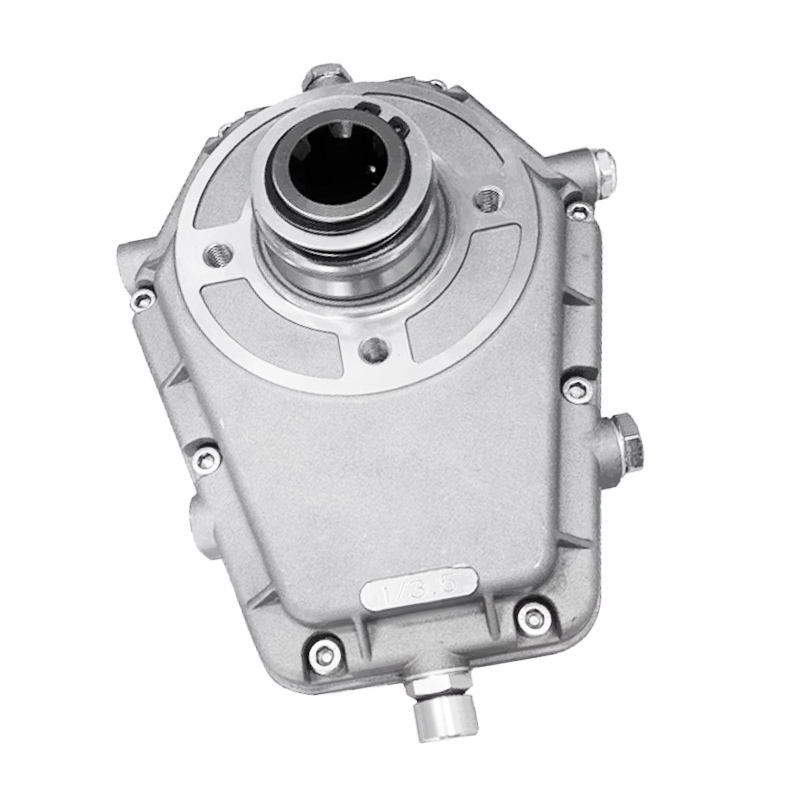Spur gears are the most common type of gears used in various mechanical systems. They feature straight teeth cut parallel to the axis of rotation, designed to transmit motion and power between parallel shafts. Known for their simplicity, efficiency, and ease of manufacturing, spur gears are essential components in industries such as automotive, aerospace, manufacturing, and robotics. They operate with minimal slippage, providing reliable performance in applications requiring constant speed ratios and high load capacity.
Understanding the technical specifications of spur gears is crucial for selecting the right component for your application. Below is a detailed list of parameters, followed by a comprehensive table for easy reference.
| Parameter | Standard Values | Units | Notes |
|---|---|---|---|
| Module (M) | 0.5, 1, 1.5, 2, 2.5, 3, 4, 5, 6, 8, 10 | mm | Larger modules for heavier loads |
| Number of Teeth (N) | 10 to 200 | - | Custom counts available |
| Pitch Diameter (D) | 5 to 2000 | mm | Calculated as M * N |
| Pressure Angle (α) | 14.5°, 20° | degrees | 20° is industry standard |
| Face Width (F) | 5 to 100 | mm | Wider for higher torque |
| Material | Steel, Brass, Nylon, Cast Iron | - | Steel most common for durability |
| Hardness | HRC 20-60 (for steel) | HRC | Varies with heat treatment |
| Accuracy Grade | AGMA 5 to 12 | - | Grade 5 for high precision |
| Backlash | 0.05 - 0.2 | mm | Adjustable based on application |
| Operating Temperature | -40 to 120 (steel) | °C | Material-dependent range |
Spur gears are versatile and used in numerous applications due to their efficiency and reliability. In automotive systems, they are found in transmissions, differentials, and starter motors, providing precise power transfer. Industrial machinery, such as conveyor systems, packaging equipment, and machine tools, relies on spur gears for consistent motion control. In robotics and aerospace, they facilitate accurate positioning and movement in actuators and control systems. Their simplicity also makes them ideal for consumer products like clocks, printers, and household appliances, where quiet operation and durability are key.
What is the main advantage of using spur gears?
Spur gears offer high efficiency, typically above 95%, due to their straight teeth design that minimizes friction and slippage. They are easy to manufacture and install, making them cost-effective for many applications. However, they can be noisy at high speeds compared to helical gears.
How do I select the right module for a spur gear?
The module selection depends on the load, speed, and space constraints. Calculate the required torque and stress, then refer to standard module sizes. For heavy loads, choose a larger module (e.g., 4-10 mm), while smaller modules (0.5-2 mm) suit precision instruments with lighter loads.
Can spur gears be used for non-parallel shafts?
No, spur gears are designed specifically for parallel shafts. For non-parallel configurations, consider bevel gears or worm gears, which are engineered to transmit motion between intersecting or perpendicular shafts.
What maintenance do spur gears require?
Regular maintenance includes lubrication to reduce wear and noise, inspection for tooth damage or wear, and ensuring proper alignment to prevent premature failure. Use appropriate lubricants based on operating conditions, such as high-temperature grease for industrial applications.
How does backlash affect spur gear performance?
Backlash is necessary to accommodate thermal expansion and prevent binding, but excessive backlash can lead to inaccuracies in motion control and increased noise. It should be minimized in precision applications through careful manufacturing and assembly, typically kept between 0.05 mm and 0.2 mm.
Are spur gears suitable for high-speed applications?
While spur gears can operate at high speeds, they may generate more noise and vibration compared to helical gears. For high-speed scenarios, ensure proper balancing, use high-precision grades, and consider noise-dampening materials like nylon if acceptable for the load requirements.
What materials are best for corrosive environments?
For corrosive environments, stainless steel, brass, or plastic materials like nylon or PTFE are recommended. These materials resist rust and chemical degradation, extending the gear's lifespan in harsh conditions such as marine or chemical processing industries.
How do I calculate the gear ratio for spur gears?
The gear ratio is determined by the number of teeth on the driving gear divided by the number of teeth on the driven gear. For example, if a driving gear has 20 teeth and the driven gear has 40 teeth, the ratio is 1:2, meaning the driven gear rotates at half the speed but with doubled torque.

